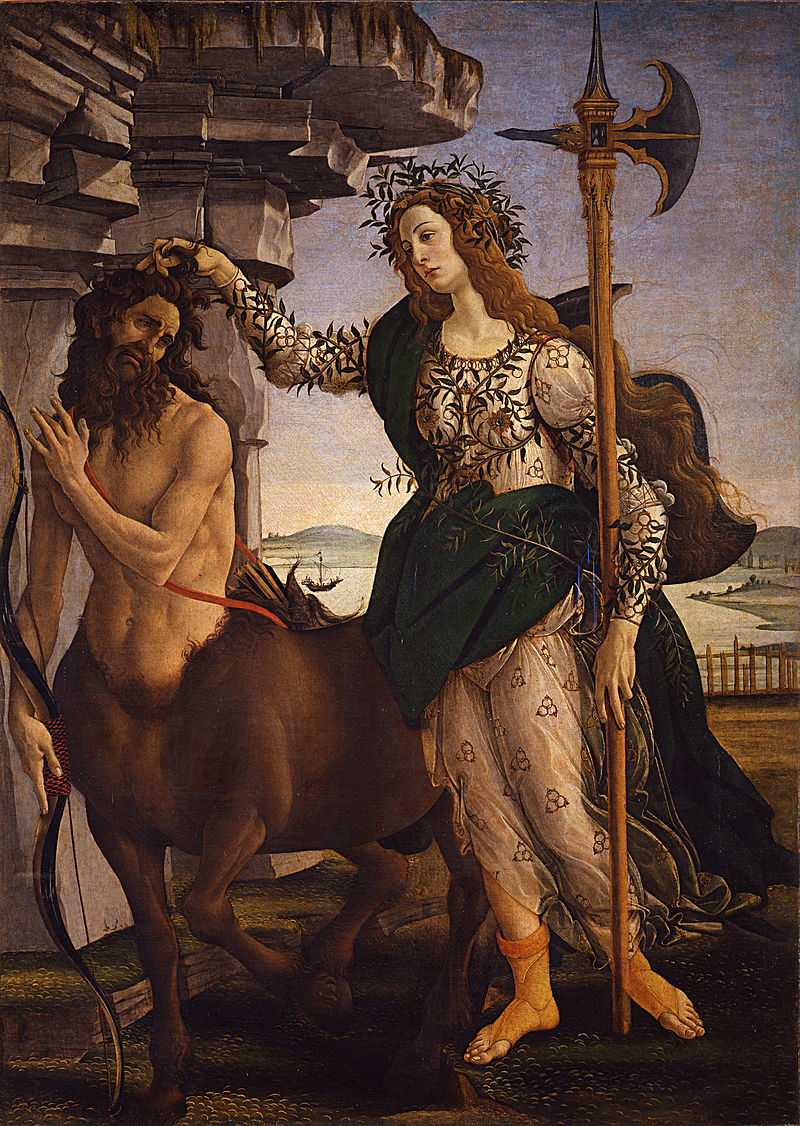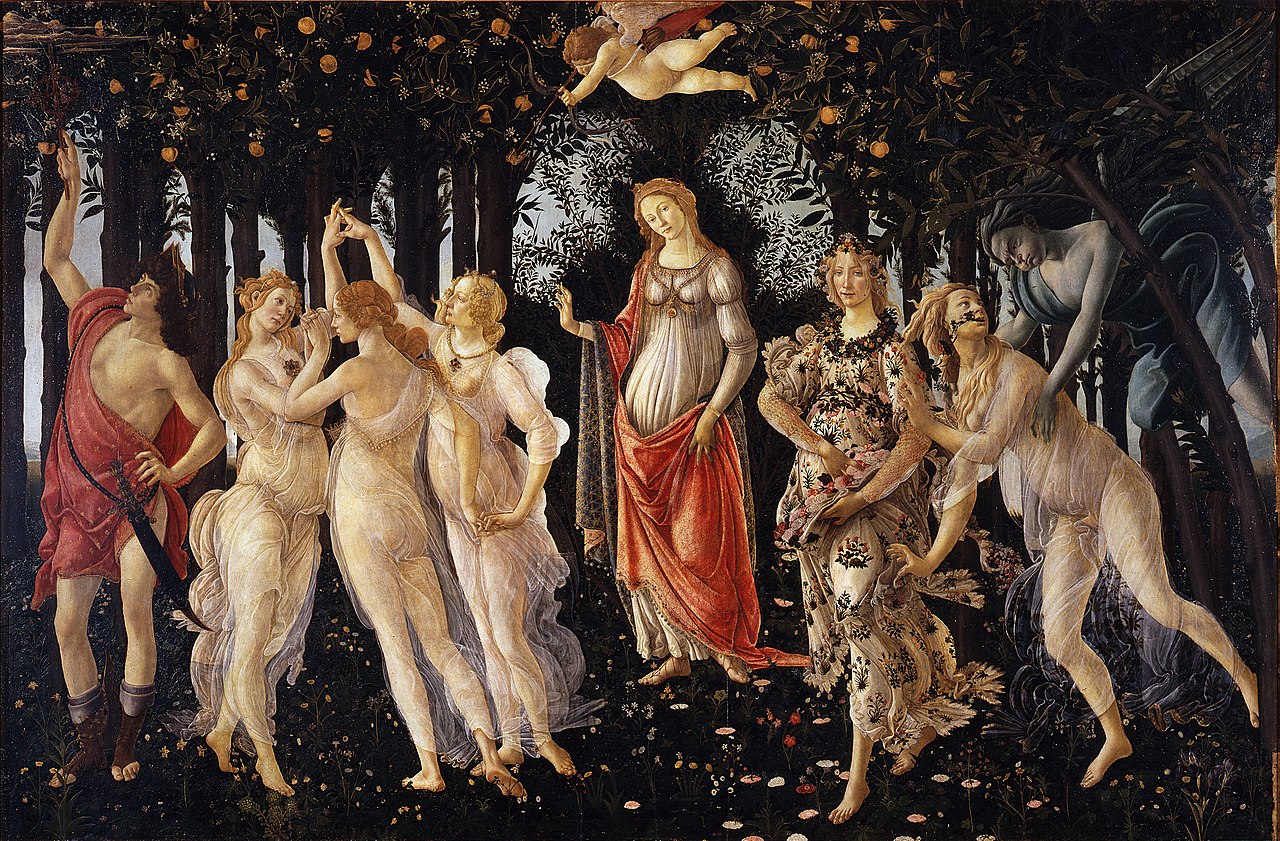Lorenzo di Pierfrancesco de’ Medici was born in Florence on the 4th of August 1463 to Pierfrancesco the Elder and his wife, Laudomia Acciaioli. Pierfrancesco the Elder belonged to the junior Medici branch, which descended from Lorenzo di Giovanni de’ Medici known as Lorenzo the Elder, son of Giovanni di Bicci de’ Medici and Piccarda Bueri. To avoid confusion, Lorenzo the Elder was a younger brother of Cosimo di Giovanni de’ Medici called the Elder, whose younger brother received this nickname after the birth of his great nephew – Lorenzo (the future ‘Il Magnifico”).

After the death of Lorenzo the Elder in 1440, Cosimo the Elder loved his nephews, Lorenzo the Elder’s sons – Francesco de’ Medici and Pierfrancesco the Elder. In the Italian TV series ‘Medici: the Rulers of Florence’ Lorenzo the Elder is shown to be brutally assassinated by the family’s foes, but in real history this event never took place and was probably taken from the tragic death of Lorenzo the Elder’s great nephew – Giuliano di Piero de’ Medici’s murder in the Florentine Duomo as a result of the Pazzi Conspiracy in 1478. It seems that Francesco died young, while Pierfrancesco survived into adulthood, married, and produced two sons: Lorenzo (1463–1503) and Giovanni (1467–1498). Upon Pierfrancesco’s passing in 1476, his both sons came into the custody of their illustrious cousin from the senior Medici branch – Lorenzo Il Magnifico, the ruler of Florence despite its Republican system.
After Lorenzo and Giovanni di Pierfrancesco came under their cousin’s guardianship, they lived together with Il Magnifico’s own many children with his wife, Clarice Orsini. The wards received a stellar education in the best traditions of popular Renaissance humanism and classics, just as Lorenzo Il Magnifico’s own offspring did. At the time, the wards were on friendly terms with their cousin’s children and shared tutors with them such as Marsilio Ficino, Angelo Poliziano, and Giorgio Antonio Vespucci, who was an uncle of the famous navigator Amerigo Vespucci. The powerful Il Magnifico controlled not only his cousins’ lives, but also their finances, and despite all his brilliance in politics and the arts, the financial position of the Medici Bank worsened under his rule, while after Il Magnifico’s quarrel with the Vatican, the Medici Roman assets were seized.
Experiencing financial difficulties, Il Magnifico began using his young wards’ wealth that they had to receive as their inheritance from their deceased father. By the time the boys came of age, their guardian owed them more than 100,000 ducats, and the dispute over the debt started. For some time, Lorenzo di Pierfrancesco and his brother voiced their displeasure in a mild way, but when Lorenzo was excluded from the lists of people eligible for election to the political institutions, the relationship between the two branches of the family began to rupture, exposing the tissue of their growing animosity towards each other. Eventually, Il Magnifico repaid a little over half of his debt in 1485. Pierfrancesco’s two sons obtained the Medici family property of Villa Cafaggiolo in the Mugello region, but it was obvious that as long as Il Magnifico governed, they would not be able to build any political career. Nevertheless, in 1483 Lorenzo di Pierfrancesco acted as the Florentine ambassador to France and witnessed the coronation of Charles VIII of France.

Nonetheless, Lorenzo di Pierfrancesco became a cultured and enlightened man mostly thanks to the influence of Lorenzo Il Magnifico over him in childhood and in adolescence, and thanks to his education controlled by his cousin. Lorenzo di Pierfrancesco was known as a man of refined tastes and liberal views, a talented poet and a connoisseur of the arts. It was Il Magnifico who taught his young ward to understand the arts and appreciate them, and who introduced his young cousins to the society of many artists patronized by the Medici family. In about 1485, Lorenzo di Pierfrancesco commissioned a gorgeous illuminated manuscript of Dante’s Divine Comedy that featured artwork by Botticelli, and later, Lorenzo became close with Botticelli and often gave him lucrative jobs.
In 1482, Il Magnifico arranged a marriage for the young Lorenzo di Pierfrancesco to Semiramide Appiano, daughter of the Appiani Lord Jacopo III of Piombino. The Appiani family had outstanding commercial ties and political connections, being related to the Aragonese of Naples. Lorenzo di Pierfrancesco appeared to have been pleased with his cousin’s choice of his bride. At the behest of Il Magnifico Sandro Botticelli created the work ‘Pallas Athene Taming a Centaur’ as a wedding gift to the new couple. In this painting the bride, Semiramide, represented by Pallas, was supposed to tame the young and passionate Lorenzo di Pierfrancesco embodied by centaur – in other words, it was an allegorical hint at Lorenzo di Pierfrancesco’s entrance into manhood. Art historians also believe that either Il Magnifico or Lorenzo di Pierfrancesco commissioned from Botticelli ‘Allegory of Spring’ to celebrate the wedding, where Mercury represented the bridegroom while the central Grace embodied the young wife. It is possible that Botticelli’s legendary work ‘The Birth of Venus’ was ordered from the painter not by Il Magnifico, but by Lorenzo di Pierfrancesco.
Lorenzo di Pierfrancesco inherited from his grandfather, Lorenzo the Elder, the Villa del Trebbio, and purchased Villa di Castello. Many artists assembled in these places to attend intellectual debates and receive new commissions, although most of them maintained strong attachment to their principal patron and ruler of Florence – Lorenzo Il Magnifico. Sandro Botticelli was on good terms with both branches of the Medici family and visited artistic debates and parties organized by Il Magnifico and his cousins. In the Villa del Trebbio, there were works from Botticelli’s workshop: an altarpiece and a Madonna. Lorenzo di Pierfrancesco was one of Michelangelo’s first patrons: Michelangelo carved for him a young St John the Baptist in marble.

The former wards of Il Magnifico did not forget the insult inflicted upon them by the famous ruler of Florence. When Lorenzo Il Magnifico died in 1492, Lorenzo and Giovanni di Pierfrancesco did not side with Il Magnifico’s successor – Piero di Lorenzo de’ Medici known in history as the Unfortunate. Piero and the other members of the senior Medici branch were expelled in 1494. Lorenzo and Giovanni di Pierfrancesco remained in Florence and supported the Republican government, earning the nickname Popolano (“of the people”) as a reward for their liberal views despite their origins. From this moment, Lorenzo di Pierfrancesco could finally participate in the Florentine political life and became an influential figure in the Republican government, always saying that he would never usurp power in the city that had been a free Republic for centuries before the senior Medici had grabbed the reins of power.

Considered by many as the cultural heir of Il Magnifico, Lorenzo di Pierfrancesco became the chief patron of the arts in Florence in the absence of the senior Medici family members. He founded a workshop of ceramics at Cafaggiolo. He and his brother seem to have supported the political activist Girolamo Savonarola, who is famous for his abhorrence towards clerical corruption and despotic rule, as well as his notorious ‘bonfires of the vanities’. Lorenzo had to protect Botticelli, Michelangelo, Filippino Lippi, Bartolomeo Scala, and most of their works. After Savonarola’s execution in 1498, the rumor circulated around the city that Lorenzo di Pierfrancesco would follow in Il Magnifico’s footsteps and assume the personal rule of the Republic, but Lorenzo staunchly refused to do so.
Lorenzo di Pierfrancesco died in Florence in 1503. His grandson, Lorenzino de’ Medici, assassinated Alessandro de’ Medici nicknamed ‘Il Moro’ (‘The Moor’) due to his dark complexion. Allesandro was the first Medici to rule Florence as a hereditary monarch, but the last ruler of Florence from the senior branch of the House of Medici, thereby passing power to Lorenzo’s another descendant – Cosimo I de’ Medici who eventually became Grand Duke of Tuscany.
All images are in the public domain.
Text © 2020 Olivia Longueville





